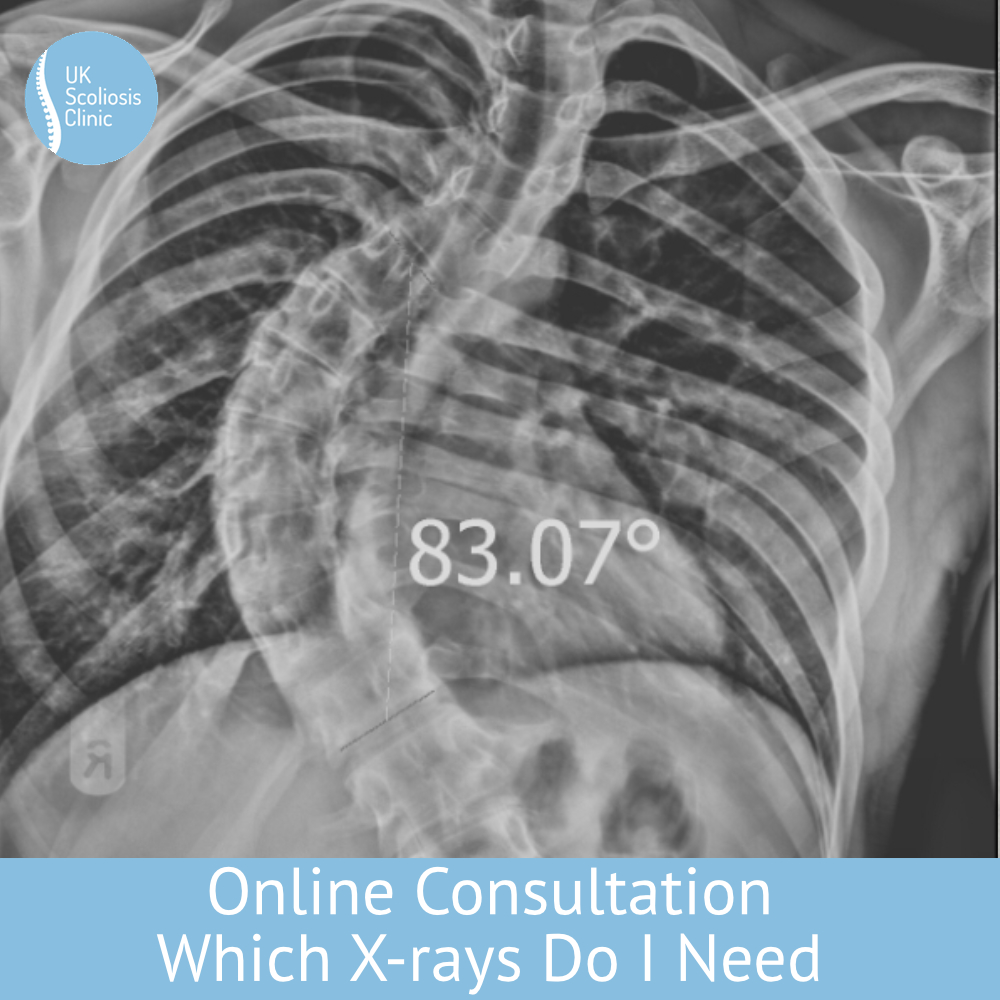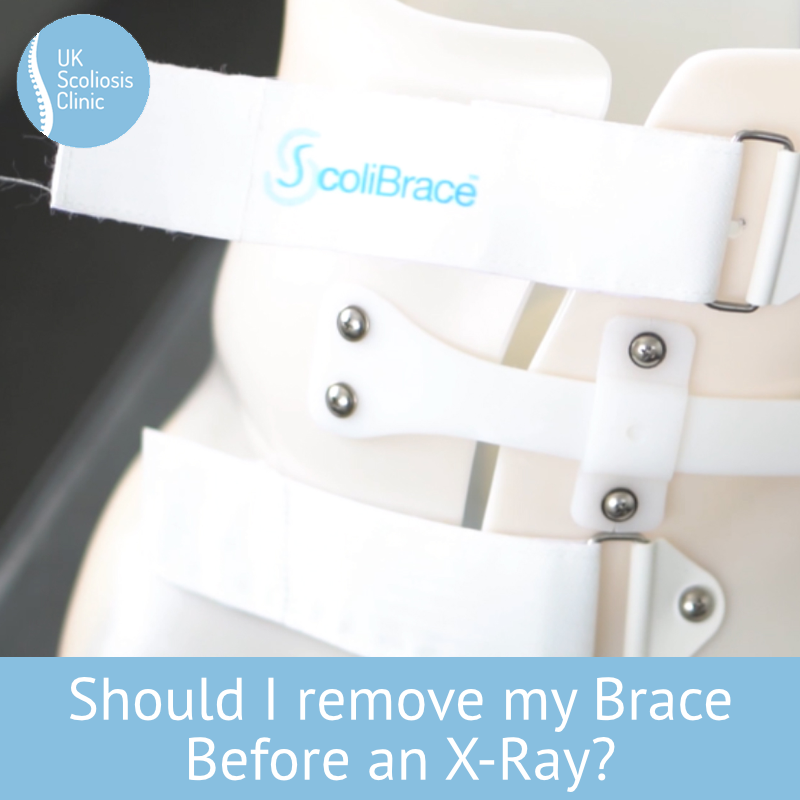
X-rays are critical for diagnosing and managing Scoliosis. They are used to diagnose scoliosis by taking an image of the spine from different angles, which allows specialists to measure the degree of curvature, identify the location and type of scoliosis, and track the progression of the condition over time. For scoliosis to be diagnosed, there must be a measurable curve in the spine which is over 10 degree’s.
X-rays are also used to monitor the effectiveness of scoliosis treatment, during bracing or exercised based therapy, X-rays are used to monitor the response of the curve to treatment, and adapt the treatment plan to ensure that the spine is responding as expected.
Which X-Rays do I need?
If you’re planning on booking an online consultation at the UK Scoliosis Clinic, it can be very helpful to have an X-ray to send us. You don’t have to have one – but as you can imagine we can give you better information if you do have one to hand. While those who attend the clinic in person can have X-rays taken here, those attending remotely will often need to arrange their own X-rays, or at least request copies from their medical doctor or hospital. So which ones are most useful from a Scoliosis point of view?
The correct type of X-ray to request for a Scoliosis consultation is a standing full spine X-ray taken at 180cm focal distance. Typically, two X-ray images are needed: one from the back (posterior-anterior or PA view) and one from the side (lateral view). It is also important to make sure that the pelvis and hips are in the images. Laying on your back x-rays are not accurate for scoliosis diagnosis and measurement, as they do not allow for the effect of gravity on the curve when standing.
The two X-ray images provide healthcare professionals with crucial information to measure the degree of curvature of the spine. The Cobb angle is the most commonly used method for measuring the degree of curvature and is calculated by adding the slant/slope of the most tilted vertebrae at the top and most tilted vertebrae at the bottom of the curve together. A Cobb angle of 10 degrees or less is considered within the normal range, whereas a Cobb angle of 10-25 degrees is classified as mild scoliosis, 25-40 degrees is moderate scoliosis, and 40 degrees or more is severe scoliosis.
As you can imagine, having the ability to determine the Cobb angle is a critical aspect of a Scoliosis diagnosis, and this is why having an X-ray to have for your consultation allows us to provide you with much more certainty. To confirm the diagnosis of structural scoliosis we need to confirm a Cobb angle of 10 degrees or more, combined with vertebral rotation. Without X-rays, we can still give a professional opinion – however, especially for smaller curves an X-ray is often the most important item to have so far as diagnosis is concerned.
If you don’t have X-Rays
If you don’t have X-rays you’re still more than welcome to book an online consultation – there’s still a great deal of advice we can give even without X-rays, however, if you can get your hands on an X-ray it’s a huge advantage.
If this is an issue for you, we would recommend that you consider an in-clinic consultation instead, if possible. At the clinic, your appointment can include a full set of Diagnostic X-rays utilising our state-of-the-art digital X-ray machine, allowing Scoliosis to be definitely diagnosed and understood. You will also receive a digital copy of your X-rays to take away.
Our in-clinic consultations are generally the most suitable for those who are concerned that they may have scoliosis but do not have X-rays or other documentation to rule the condition in, or out. It’s also ideal for those who know they have Scoliosis and are actively looking to take up non-surgical treatment or are wanting to change treatment, perhaps from another provider.



